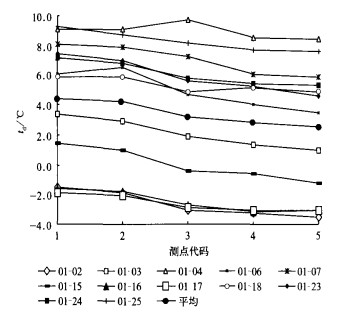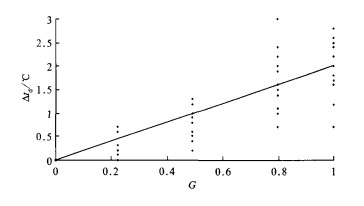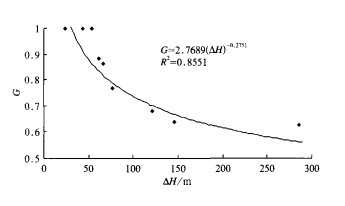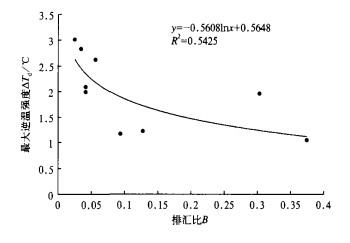2004/2005年连江县冬季沿坡地地面气温观测和分析研究
Investigation and Analysis on Surface Air Temperature of Sloping Fields of Lianjiang County in 2004/2005 Winter
-
摘要: 中亚热带地区种植南亚热带果树易遭冬季低温冻害, 而坡地逆温的最大增温效应往往比目前所采取的一些防冻措施的效应要好。研究坡地逆温特征、选择适宜的坡位种植果树对避免或减轻低温给果树造成的损失有重要的应用意义。据福建省连江县2004/2005年度冬季低温考察资料分析, 对于相对高差小于50 m的小山坡, 晴天最低气温随高度的增加而增加, 越近坡顶, 最低气温越高; 对于相对高差不足100 m的小山坡, 在相对高差约9/10附近的山坡中上部, 晴天最低气温常出现最高, 逆温效应最明显。汇总几个山坡地的考察资料, 分析得出坡地逆温具有以下两个特征:最大逆温出现的坡位与山坡的总高度差呈反相关; 最大的逆温强度与排汇比和山坡总高度差有关。Abstract: The technique of inverse temperature of sloping fields as an effective method to prevent the frozen loss is applied to protect these fruit trees in practice. Comparison of results from the traditional methods which are laborious and costly in protecting fruit trees shows that the maximal increasing temperature effect of inverse temperature of sloping fields is excellent. By analyzing the characters of inverse temperature of sloping fields, to select appropriate regions for planting these fruit trees is significant in avoiding or mitigating the freezing harm to them. According to the investigation statistics data of low temperature of 2004 and 2005 in Lianjiang, the effect of low temperatures in sloping fields is studied. The results reveal that the temperature gap (Δtd), which denotes difference between the low temperature of observation spot in sunlight days (td) and the temperature at the bottom of sloping fields, is increasing with the increase of altitude where the hills with relative total altitude gaps (ΔH) are 49 m. Along with the distance close to the top of the sloping fields, Δtd and td are larger and larger. Furthermore, td is the highest, and the inverse temperature is prominent where the middle or upper parts of the hills with ΔH are 100 m and relative altitudes ratios, which is the ratio (G) between the relative altitudes gaps of observation spot and ΔH are 0.90 approximately. As a result, based on the investigation in the study, a conclusion can be drawn that the inverse temperature of sloping fields has three characters as follows: in unclouded nights, the inverse temperature phenomenon that the temperature at the top or middle of the sloping fields is higher than at the bottom of the sloping fields exists at the hills. If ΔH≤60 m, the formula can be acquired: Δtd=b0+b1×G (b1 > 0), which means td at the top of the sloping fields is the highest, and the maximum of inverse temperature (ΔTd) can be calculated from the formula: ΔTd=b0+b1. Else if 300 m > ΔH≥80 m, they reveal that Δtd can be calculated from the formula: ΔTd=b0-b1×(G-b2)2 (b1 > 0, b2 > 0), when G equals b2, td is the highest and ΔTd equals b0; considering the hills where the relative altitude gaps are less than 300 m, the location of the ratio (G) where the maximum inverse temperature exists is opposite to ΔH, and with the increase of ΔH, G is descending; ΔTd is correlated with the amount of push-join (B) (which denotes the ratio between the azimuth of the push-join and 360°) and ΔH of hills. When the B are identical, with the increase of ΔH, ΔTd is increasing acco rdingly. When ΔH are identical, because of the restrictive condition 1≥B > 0, with the decrease of B, ΔTd is increasing contrarily.
-
表 1 东坡组和北坡组Δtd与G的相关分析

表 2 几处坡地逆温情况

表 3 坡地逆温特征的相关统计

-
[1] 俞德浚.中国果树分类学.北京:农业出版社, 1979: 323-326. [2] 蔡文华, 陈惠, 张星, 等.区域性冬季低温冻害评价方法的研究.气象, 2001, 27 (增刊): 8-11. [3] 魏淑秋.农业气象统计.福州:福建科学技术出版社, 1985: 98-113. -


 设为首页
设为首页 加入收藏
加入收藏



 下载:
下载:





